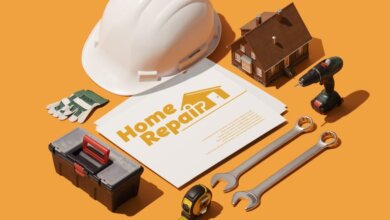Winter-Proof Your Refrigerator: Why Minnesota’s Cold Demands Extra Maintenance

In Minnesota, where temperatures regularly dip below freezing for months, we take winter seriously. We salt sidewalks, insulate windows, and winterize our vehicles. But one major household appliance often gets overlooked in the seasonal checklist — the refrigerator.
Whether it’s your main kitchen fridge or the extra one in your unheated garage, Minnesota winter refrigerator maintenance is crucial to keeping your appliances running efficiently and avoiding costly repairs.
Here’s why cold weather fridge care matters and what steps you can take to protect one of the hardest-working appliances in your home.
How Minnesota Winters Affect Refrigerator Performance
Refrigerators are designed to work in environments where the surrounding air stays within a certain temperature range — typically between 60°F and 95°F. In Minnesota’s brutal winters, many homes have areas like basements or garages that dip well below freezing, putting your fridge in an environment it’s not built for.
In extremely cold environments, a refrigerator’s thermostat may stop triggering the compressor, tricking the unit into thinking it’s already cold enough. This can lead to:
-
Spoiled food in the fresh food compartment
-
Over-freezing in the freezer
-
The compressor shutting off entirely
If you store a second fridge in an unheated garage — a common practice for many Minnesotans — it’s even more vulnerable.
Cold Weather Fridge Care: What Every Minnesota Homeowner Should Know
Here are essential cold weather fridge care tips to keep your appliance functioning smoothly through the winter:
1. Don’t Assume Cold = Good
When it’s freezing outside, it may seem like your fridge doesn’t have to work as hard. But most units are not engineered to function efficiently below 50°F. The freezer section, in particular, may stop working if the compressor never kicks on.
2. Watch Garage and Basement Temperatures
If you keep a fridge in the garage, consider installing a garage refrigerator kit — it includes a small heating coil to keep the thermostat working correctly in low ambient temperatures.
3. Keep It Away from Drafts
Avoid placing your refrigerator near windows or exterior doors. Drafts can disrupt the temperature control system, especially in older units.
4. Don’t Set the Fridge Too Cold
Surprisingly, in the winter, setting your fridge too cold can cause freezing in the fresh food section, especially if the freezer is underperforming due to the ambient temperature.
Common Winter Refrigerator Problems in Minnesota
Homeowners across Minnesota report common issues during the colder months. These include:
-
Compressor not running: In cold garages or porches, the thermostat won’t trigger the compressor.
-
Frozen coils or lines: If temperatures plummet too far, water lines inside or around the fridge may freeze.
-
Condensation buildup: When warm air hits cold surfaces inside the fridge, it can lead to condensation and mold.
-
Freezer thawing out: If the compressor stops working, the freezer section may start to defrost — especially risky for frozen meats and prepared meals.
These are more than just inconveniences. Left unchecked, these problems can lead to food waste, electrical hazards, or total unit failure.
Minnesota Winter Refrigerator Maintenance Checklist
Here’s your go-to winter maintenance guide for keeping your refrigerator in top shape:
✅ Inspect the Door Seals
Cold air sneaking in or out can cause condensation and make your fridge work harder. Check the rubber gasket for cracks or looseness.
✅ Monitor Internal Temperatures
Use an appliance thermometer to verify that your fridge stays between 37°F–40°F and your freezer between 0°F–5°F.
✅ Clean the Condenser Coils
Dirty coils reduce efficiency and can cause overheating. Clean the back or bottom coils with a vacuum or coil brush every 2-3 months.
✅ Avoid Empty Fridges
A fuller fridge holds temperature better. If you have extra space, fill jugs of water and store them to stabilize the internal temp.
✅ Protect Garage Fridges
Install a garage heater kit or insulate the area if ambient temps fall below 40°F. These inexpensive additions can extend your appliance’s life.
✅ Use Surge Protectors
Winter storms can cause power surges. Plug your fridge into a surge protector to prevent electrical damage.
When to Call for Appliance Repair Services in Minnesota
Not every fridge problem needs immediate attention — but some issues require professional help to avoid permanent damage.
📌 Signs You Shouldn’t Ignore:
-
Strange noises (buzzing, clicking, or humming)
-
Fridge or freezer not maintaining temperature
-
Water pooling around the unit
-
Food spoiling too quickly
-
Ice buildup in non-freezer sections
DIY fixes may sound tempting, but refrigerators are complex machines. It’s best to contact local appliance repair services familiar with Minnesota’s climate and electrical systems. They can diagnose cold-related malfunctions quickly and safely.
Pro Tips to Extend Fridge Lifespan Through Harsh Winters
Here are some bonus winterproofing tips that can save money in the long run:
➤ Track Energy Usage
Smart plugs and energy monitors can alert you to irregularities in fridge power draw, helping detect problems early.
➤ Insulate the Space
Garage fridges benefit from insulated walls, floors, and weather stripping. If the area stays warmer, the fridge doesn’t have to overcompensate.
➤ Don’t Open Doors Too Often
Every time you open the fridge, warm interior air mixes with cold exterior air, causing frost or condensation. Keep the door closed as much as possible.
➤ Defrost Regularly
If your unit doesn’t have an auto-defrost feature, make sure to manually defrost it during winter to avoid thick ice buildup.
Don’t Ignore Your Fridge This Winter — It’s Working Harder Than You Think
We winterize our homes, our cars, and our wardrobes. So why do we forget the one machine quietly running 24/7, keeping our food fresh and safe?
Minnesota winter refrigerator maintenance isn’t just a “nice-to-do.” It’s a smart investment in your appliance’s longevity — and your family’s well-being.
By paying attention to cold weather fridge care, checking for early signs of failure, and scheduling regular maintenance, you can avoid the hassle (and cost) of emergency appliance repair services when the temps are at their worst.
Final Thoughts
Minnesota’s winters are no joke, and your refrigerator isn’t immune to the effects of freezing temperatures. With just a few seasonal checks and preventative steps, you can avoid spoiled food, costly energy waste, and emergency repair bills.
So this winter, add your fridge to the list of things you prepare for the cold. It’s one small task that delivers big peace of mind — all season long.




